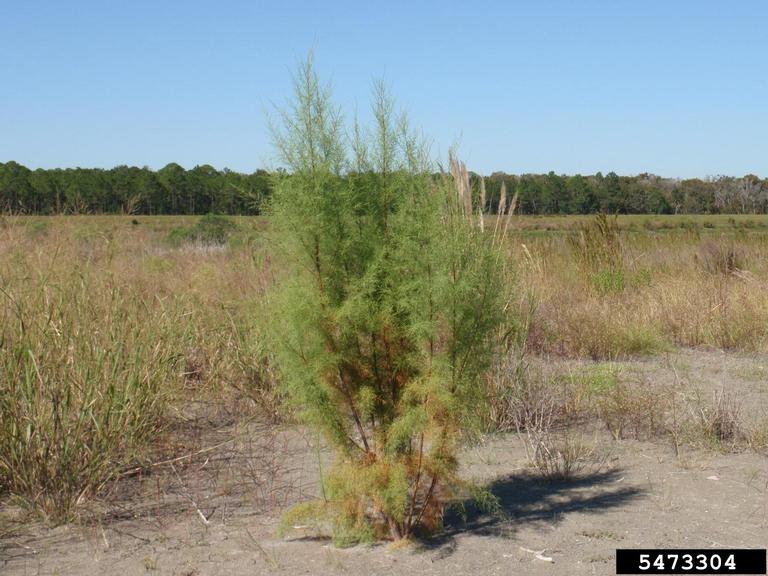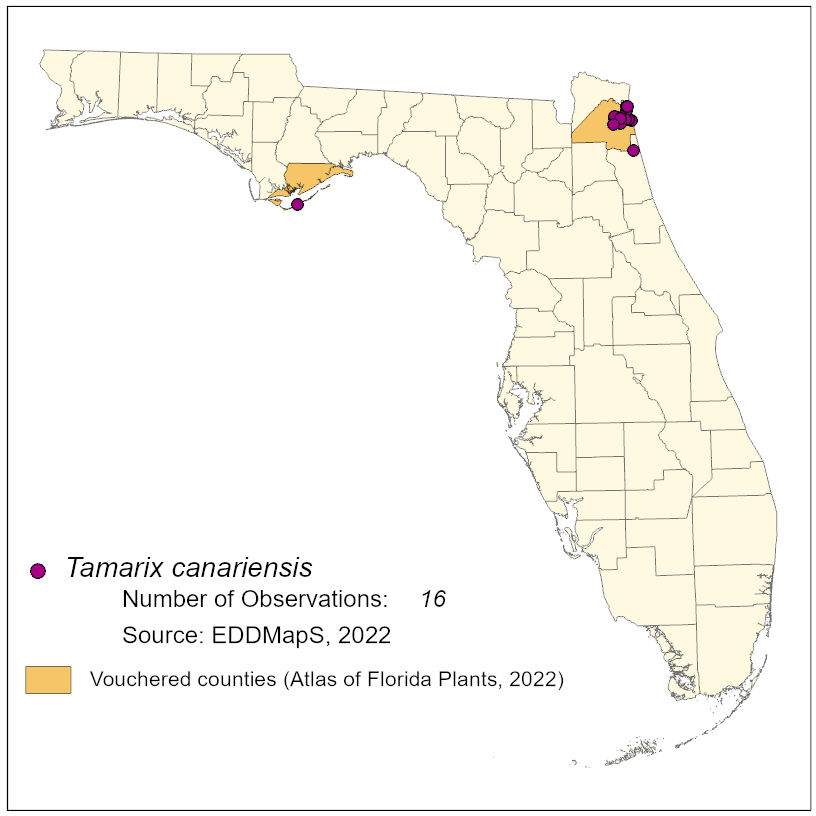Common Name: Canary Island tamarisk
Family: Tamaricaceae
Common Synonyms: none
USDA Hardiness Zone: 5 to 10
Growth Habit: Shrub or small tree
Origin: Africa and Europe
FISC Category: -
FDACS Listed Noxious Weed: No
Introduction Date: Earliest Florida herbarium specimen from 1933
IFAS Assessment:

Deciduous, multi-stemmed shrub to 5 m tall with long tap (to 30 m) and lateral roots (to 50 m). The leaves are minute and scale like, closely resembling the reduced leaves of cedar trees (Juniperus spp.). Foliage turns golden-orange in the fall. Attractive pink flowers are born in racemose inforescences at the terminus of green branches of the current year.
Coastal berms, beach dunes, and spoil islands
No weed risk analysis has been done.

NA
http://www.cabi.org/isc/datasheet/52486
Invasive Species Compendium (http://www.cabi.org/isc/datasheet/52486)